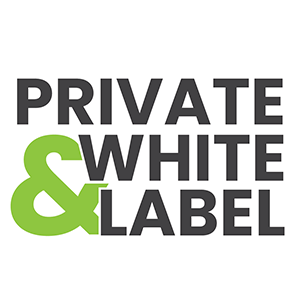Introduction
The landscape of the CBD and cannabinoid market is shifting rapidly, influenced by growing consumer interests and advancements in product offerings. While CBD has paved the way for mainstream acceptance of cannabinoids, others, such as HHC (Hexahydrocannabinol), are gaining traction. This surge is compelling CBD retailers to rethink their strategies and adapt to the changing dynamics. In this article, we’ll explore the fundamentals of HHC and other cannabinoids, delve into evolving consumer behavior, and outline effective retail strategies for success in this vibrant marketplace.
Understanding HHC and Other Cannabinoids
What is HHC?
HHC, or Hexahydrocannabinol, is a semi-synthetic cannabinoid that arose from THC, the psychoactive component found in cannabis. While HHC does provide a moderate psychoactive effect, it tends to be less intense than that of traditional THC. Its unique properties are starting to pique consumer curiosity, particularly in areas where it is legally permissible.
For many, HHC offers a new frontier in cannabinoid experience, one that marries the therapeutic benefits of cannabis with a gentler high. This has made it a favorable option for those searching for alternative methods to support their wellness.
Other Emerging Cannabinoids
Beyond HHC, a variety of cannabinoids are gaining attention, including CBD (Cannabidiol), CBG (Cannabigerol), and CBN (Cannabinol). Each of these compounds serves specific purposes and appeals to distinct consumer needs.
- CBD is known for its wellness benefits, including stress relief and anti-inflammatory properties.
- CBG is often hailed for its potential to improve focus and clarity, making it appealing to productivity seekers.
- CBN is typically associated with aiding sleep, gaining traction among those who struggle with insomnia.
By understanding these unique profiles, CBD retailers can innovate and diversify their product ranges to meet evolving customer demands.
Consumer Behavior and Trends
Wellness-Oriented Products
The trend towards wellness is undeniable. Today’s consumers are increasingly inclined to seek out cannabis and CBD products that not only cater to interest but also align with their health goals. This encompasses:
- CBD-infused skincare products designed for topical relief.
- THC-based sleep aids aimed at promoting restful nights.
- Edibles and beverages designed to fit seamlessly into daily routines.
Retailers who prioritize health-oriented products are likely to capture the interest of health-conscious customers while promoting a holistic approach to cannabis consumption.
Innovative Consumption Methods
The days of traditional smoking methods are gradually receding. Instead, many consumers look towards more sophisticated and alternative consumption methods. Among the most popular are:
- Edibles, such as gummies and chocolates, which offer flavorful options with controlled dosing.
- Tinctures, providing precise dosages that are easily added to beverages or taken sublingually.
- Topicals that deliver localized relief without the psychoactive effects, catering to consumers wary of the high from THC.
By expanding product lines to feature these innovative formats, retailers can engage both novice and experienced consumers alike.
Demographic Shifts
A notable demographic trend has emerged: young women are increasingly leading the charge in cannabis consumption, outpacing men in several instances. This shift calls for tailored marketing strategies that resonate with female consumers:
- Emphasize wellness, aesthetics, and convenience.
- Create campaigns that speak to empowerment and self-care.
Understanding the nuances of this demographic can help retailers refine their approaches and develop products that align more closely with these values.
Retail Strategies for Adapting to Cannabinoid Trends
Data-Driven Approaches
In an ever-evolving market, knowledge is power. Retailers can harness data-driven point-of-sale (POS) systems and AI technology to gain insights into consumer preferences and emerging trends. Such analysis can reveal:
- Customer purchasing habits.
- Important search terms driving consumer inquiries.
- Insights into wellness-related topics that resonate.
By leveraging these insights, retailers can make informed decisions about product development and marketing strategies.
Omnichannel Sales Strategies
In today’s fast-paced world, convenience is king. A successful CBD retailer must embrace an omnichannel approach, offering products through various platforms—whether through physical storefronts, online shops, or mobile apps.
Key elements of a successful omnichannel strategy may include:
- Integrating inventory across channels for real-time updates.
- Streamlining the shopping experience to save customers time.
- Offering customer support across platforms to enhance accessibility.
Striving for a seamless experience ensures customer retention and loyalty.
Sustainable and Organic Products
Consumers are increasingly valuing products that are organic, non-GMO, and sustainably sourced. Retailers who prioritize these aspects in their supply chain can appeal to this conscientious demographic. Strategies to consider include:
- Collaborating with eco-friendly suppliers.
- Clearly communicating sustainability benefits in marketing materials.
- Gaining certifications that the products meet organic standards.
Emphasizing sustainable practices not only enhances brand reputation but also builds trust among consumers.
Regulatory Compliance
Navigating the regulatory landscape is a complex task. With laws continuously evolving at the federal and state levels, maintaining compliance is critical for CBD retailers. Key actions include:
- Staying up-to-date on legal requirements and industry standards.
- Regularly auditing products to ensure they meet compliance regulations.
- Implementing training for staff to understand legal constraints and product safety.
Robust compliance practices bolster consumer trust and mitigate risks associated with legal challenges.
Consumer Education and Engagement
To thrive in the competitive cannabinoid ecosystem, effective consumer education is essential. Retailers should take proactive measures to inform their audience about cannabinoid benefits—leveraging:
- Informative blog posts and articles.
- Workshops or in-store demonstrations.
- Comprehensive FAQs addressing common queries about products and their effects.
An educated consumer is more confident when making purchases, enhancing brand loyalty.
Market Impact and Projections
Market Growth
The U.S. cannabis market, including CBD and emerging cannabinoids, is expected to soar to nearly $45 billion in revenue by 2025, with forecasts predicting over $49 billion by 2028. This anticipated growth underscores the necessity for retailers to adapt to existing trends to capitalize on emerging opportunities in this lucrative market.
Consumer Interest
Rising diversity in product offerings is driving significant consumer interest. Retailers ranging from specialty boutiques to major chain stores are stepping into the space, each vying for their share of this burgeoning market. Responding effectively to these trends—whether it’s through expanding product ranges or enhancing consumer engagement—will prove crucial for long-term success and sustainability in the sector.
Conclusion
The surge of HHC and other cannabinoids creates a landscape rich with both challenges and captivating opportunities for CBD retailers. By leveraging insights into consumer behavior, adopting innovative sales strategies, embracing sustainability, and prioritizing regulatory compliance, retailers can position themselves to thrive in this ever-changing market. As consumer preferences continue to evolve, those who stay nimble and adaptable will find themselves leading the charge into the promising future of cannabinoids.
Actionable Takeaways
- Diversify Product Offerings: Broaden your range to include various cannabinoids and innovative consumption formats.
- Invest in Data Analytics: Utilize POS systems and AI technology for actionable consumer insights.
- Focus on Wellness and Sustainability: Prioritize organic and sustainably-sourced products to meet consumer demand.
- Stay Informed About Regulations: Monitor changes in legal requirements to maintain compliance and foster consumer trust.
- Educate and Engage Consumers: Foster an informed customer base through content marketing and direct engagement.
Embracing these strategies will not only enhance resilience but also ignite future growth and profitability in the burgeoning cannabinoid market.



















